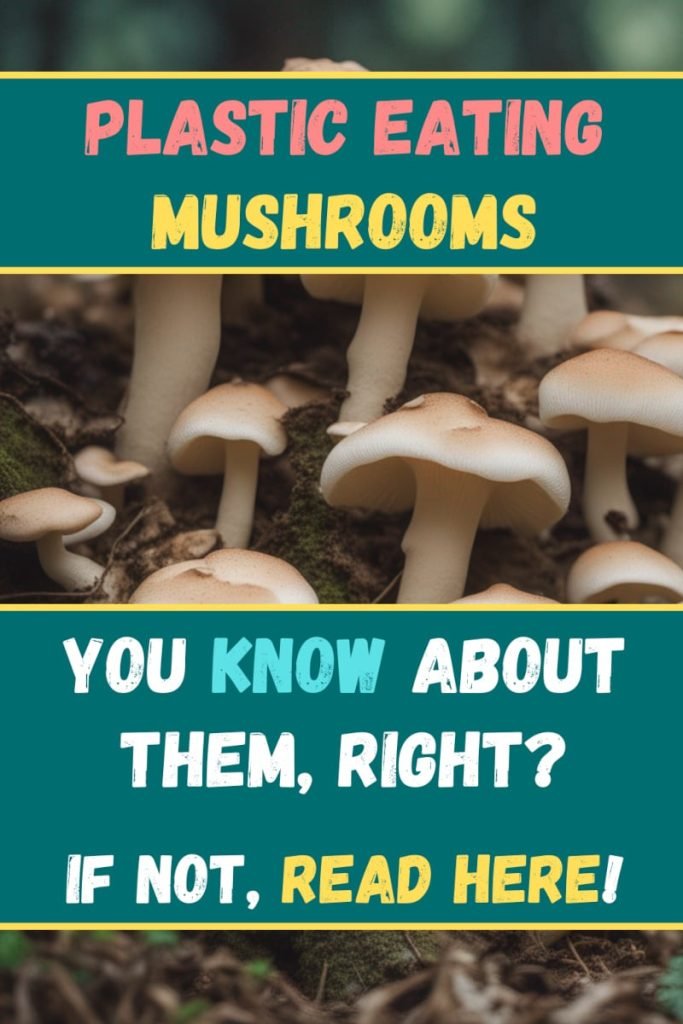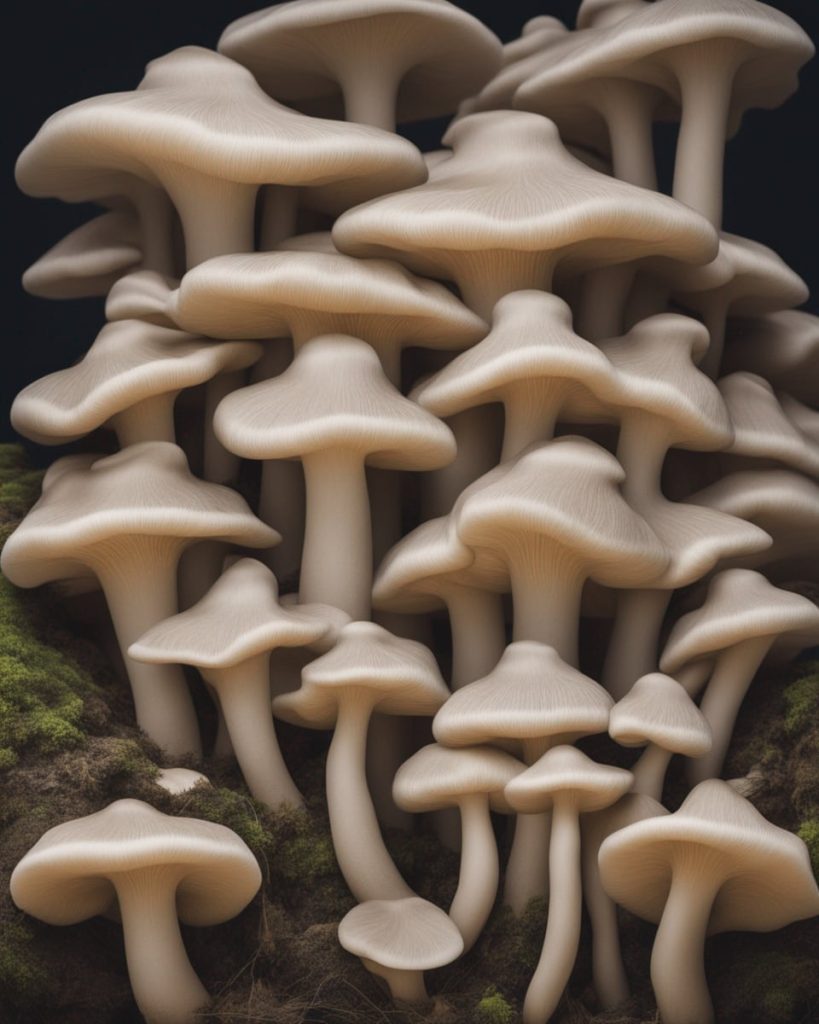As an entrepreneur and engineer passionate about finding sustainable solutions to the world’s environmental problems, I’m very excited about the plastic eating mushroom sustainability revolution! These fungi have the potential to clean up our planet by breaking down plastic waste into harmless material. With their unique ability to consume plastic, these mushrooms could be a game-changer in our fight against plastic pollution. Let me show you how they can help save our planet!
Plastic eating mushrooms are a type of fungi that can break down plastic materials. These mushrooms have enzymes that help to break down the polymers of plastic, allowing them to be recycled or reused. They are an environmentally friendly way to reduce waste and help the planet.

What are Plastic Eating Mushrooms?
Plastic eating mushrooms, also known as mycoremediation fungi, are a group of fungi that have the ability to break down and consume certain types of plastic.
These mushrooms have been discovered in the last few years and scientists are still trying to understand their biology and how they digest plastic. The power of positive thinking, placebo effect, and law of attraction have been studied as potential solutions for reducing plastic pollution problems.
These mushrooms can be used to help reduce plastic waste by breaking it down into smaller pieces that can then be recycled or reused. They can also help clean up polluted environments by consuming pollutants such as polyurethane, one of the main ingredients in many plastics. This process is known as mycoremediation.
How Do They Work?
The process by which these fungi break down plastics involves an enzyme called laccase that breaks down polymers into smaller molecules that can then be absorbed by the fungus. This process takes between two weeks and several months depending on the type of plastic used.
The fungi use a combination of enzymes and microbial activity to break down the polymer chains found in plastics. The enzymes work together with other microorganisms such as bacteria to speed up the process. As well as breaking down plastics, these fungi also release nutrients back into the soil which helps promote healthy plant growth, such as oxygen-producing trees and grass.
The Fungal Enzyme Breakdown Process
Fungi produce laccases which act like scissors cutting apart long chains of polymers found in plastics. These enzymes are able to break apart large molecules into much smaller ones which can then be absorbed by the fungus itself or other microorganisms living within its environment.
Types Of Plastic Eating Mushrooms
There are currently several species of plastic-eating mushrooms identified so far, including: Pestalotiopsis microspora, Pleurotus ostreatus, and Schizophyllum commune. Each species has its own unique characteristics when it comes to breaking down different types of plastics but all three share some common traits when it comes to digestion processes involving polymers.

1. Pestalotiopsis microspora
This species was first discovered in Ecuadorian Amazon rainforest soils where it was observed breaking down polyurethane foam samples within a few weeks’ time frame. It is capable of digesting both low-density polyethylene (LDPE) films commonly used for food packaging materials, along with high-density polyethylene (HDPE) films typically used for making bottles.
2. Pleurotus ostreatus and Schizophyllum commune
Plastic pollution is a global crisis, and the discovery of plastic-eating mushrooms has been hailed as a revolutionary solution. Two species of fungi that have shown promise in this field are Pleurotus ostreatus and Schizophyllum commune. Both can digest polyurethane, one of the main components of plastic products. While it takes between two weeks and several months to break down plastics depending on the type used, these fungi could be an efficient tool for waste remediation.
3. Aspergillus tubingensis
Aspergillus tubingensis is a species of fungus that has been found to have the unique ability to consume polyurethane, one of the main ingredients in plastic products. It was discovered in 2018 by researchers from Japan’s Kyoto University and has since become an important tool for waste remediation.
This particular species of fungi takes around two weeks to break down and consume plastic, depending on the type of plastic used. This makes it an efficient digester for getting rid of plastic waste products effectively.
Are Plastic-Eating Mushrooms Edible?
The short answer is no: Aspergillus tubingensis and other plastic-eating mushrooms are not edible and should not be consumed. These mushrooms have evolved to digest plastics and are not suitable as food sources. However, some of them, like the common Oyster Mushroom, can be consumed.
Moreover, Australian researcher Katharina Unger created a prototype called Fungi Mutarium that can be used to grow those edible plastic-eating mushrooms.
Pros & Cons of Eating them
The discovery of plastic-eating mushrooms is a revolutionary breakthrough in the fight against plastic pollution. While they offer an efficient way to remediate waste, there are both pros and cons to consider when it comes to consuming them.
- Pros: Plastic-eating mushrooms can quickly break down and consume plastic, reducing the amount of waste in landfills and oceans.
- Cons: Eating these fungi could potentially be harmful, so caution should be taken as more studies are necessary.
How Can We Use these Mushrooms to Combat Plastic Pollution?
Mycoremediation: Using Fungi for Cleanup Purposes
Mycoremediation is a process whereby fungi are used for cleanup purposes such as breaking down pollutants like petroleum hydrocarbons or polychlorinated biphenyls (PCBs). The same process can be applied to plastics by using certain mushroom species that have evolved over time with the ability to break down polymers chains into smaller pieces.
Using mycoremediation techniques, researchers can cultivate specific strains of fungi that will feed on synthetic materials like plastics. By creating an environment where these fungi can thrive, scientists hope that their efforts will eventually lead to more effective methods for breaking down man-made materials faster than ever before.
Through mycoremediation, we may have found a powerful tool for reducing our reliance on plastics and saving our planet!
The Potential Benefits of Mycoremediation
- Reduced need for landfill space due to decreased amount of nonbiodegradable materials being discarded.
- Cleaner water sources due to reduced leaching from landfills into nearby bodies of water.
- More efficient use of resources by turning what would otherwise be waste into usable material again.
By utilizing this technique, we could potentially create a sustainable economy based on mushroom cultivation. One which would help reduce our dependence on nonbiodegradable materials while also providing us with nutritious food sources. This could revolutionize our approach to solving global environmental issues such as plastic pollution while also improving public health outcomes across the world.
Could we Create a Sustainable, Mushroom-based Economy?
The potential for mushrooms to be used as a sustainable resource in the fight against plastic pollution has been gaining traction in recent years. With the discovery of new species of fungi with the ability to digest polyurethane, scientists and entrepreneurs are exploring ways to develop an economy based on these plastic-eating mushrooms.
Mushroom cultivation is not only a viable option for reducing plastic waste, but it could also create jobs and provide economic opportunities in communities that have been affected by plastic pollution. Cultivating edible plastic eating mushrooms can be done on a small scale or at large industrial facilities, allowing for greater production and wider distribution.
The Science Behind Plastic Eating Mushrooms
The science behind plastic eating mushrooms is truly remarkable. Not only do certain fungi have the ability to consume polyurethane, a major component of plastics, but research has also shown that they can take anywhere from two weeks to several months to break down and digest these materials!
For example, Biohm is now working on developing a strain of fungus specifically designed to make it even more efficient at breaking down plastic waste products. All in an effort towards saving our planet.
How Fungal Enzymes Break Down Polymers
Fungi have evolved over millions of years to break down complex molecules like polymers into simpler components that are easier to metabolize. This process is known as biodegradation, where enzymes produced by fungi break down the bonds between atoms in polymers so they can be absorbed into their cells.
These enzymes work much like human digestive enzymes do – breaking down larger molecules into smaller ones so they can be more easily absorbed into our bodies. The same process occurs when fungi digest polymers; they produce enzymes that break apart the polymer’s molecular structure until it becomes small enough for them to absorb.
The Role of Bacteria in Mycoremediation
In addition to fungi, bacteria play an important role in mycoremediation. The use of fungi and bacteria together to remediate environmental contaminants such as plastics. Bacterial populations exist alongside fungal populations and help facilitate their decomposition processes by producing additional enzymes that further break down polymers.
Bacteria also secrete organic acids which help dissolve certain types of plastics and act as catalysts for fungal enzyme production. This symbiotic relationship between bacteria and fungi makes mycoremediation an effective tool for tackling plastic pollution problems around the world.
Mushroom-based Solutions for Plastic Pollution
There have been several successful case studies involving mycoremediation projects around the world. In India, researchers at IIT-Kharagpur used a strain of fungus called Aspergillus tubingensis to successfully degrade polyurethane foam.
Here are some of the facts:
- Pestalotiopsis microspora, a type of fungus discovered on trees in Ecuador’s Amazon rainforest was found to have the ability to consume polyurethane
- Pleurotus ostreatus, commonly known as oyster mushrooms have been studied for their potential use in degrading PET films
- Schizophyllum commune, another type of mushroom has also been shown capable of decomposing PET films
- Aspergillus tubingensis, another type of fungus was successfully used by researchers at IIT-Kharagpur for degrading polyurethane foam
FAQ
How long does it take for a mushroom to break down plastic?
The Pestalotiopsis fungi have the remarkable ability to break down plastic in anaerobic conditions, making it a great option for landfills. This marvelous mushroom opens up the possibility of using it as a home recycling system.
How long does it take for this fungus to consume plastic? The rate of digestion varies depending on environmental factors such as temperature, humidity and oxygen levels. Generally speaking, it can take anywhere from several days to weeks for the mushroom to completely digest plastic.
Can fungi break down plastic into smaller parts?
Yes, certain fungi can decompose plastic! The Pestalotiopsis genus has been identified as being able to break down polyethylene in anaerobic conditions. This discovery of the ‘Marvellous Plastic-eating Mushroom’ opens up possibilities for its use in recycling systems.
Is there a type of plant that can consume plastic?
Yes, there is a plant that can eat plastic! The Pestalotiopsis fungi has been identified as the ideal candidate for breaking down plastic in anaerobic conditions. This remarkable mushroom opens up possibilities for its use as a domestic recycling system.
Conclusion
The plastic eating mushroom revolution has been an incredible success story so far. Not only are these fungi helping to reduce the amount of plastic pollution in our environment, but they are also providing a sustainable and renewable source of nutrition for people all over the world. With more research and development, this revolutionary technology could one day provide us with a truly sustainable way to reduce our reliance on single-use plastics.
This discovery is well aligned with the 6 R’s of sustainability, allowing us to finally be able to decompose plastic in a reasonable time!
From their humble beginnings as mere mushrooms growing in the wild, these plastic eating fungi have become a global phenomenon. By utilizing the power of nature to break down plastic waste, we can protect our planet from further damage while simultaneously creating new sources of nutrition for ourselves and future generations. The plastic eating mushroom revolution is here to stay, let’s make sure it continues!

